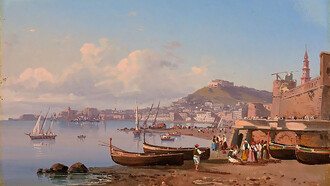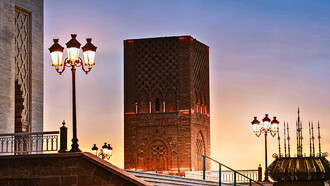It is the first days of spring, and I go to Washington Square Park on one of my frequent visits. The park is New York’s Greenwich Village’s lung, its historic frame of reference, a tourist’s magnet, and a place of encounter for lovers, gymnasts, and musicians.
In the center of the square, where there is a water fountain, a group of young men is putting on a show. They are not only excellent gymnasts but also first-class showmen. For a bit less than half an hour, they have a captive audience. They mimic, tease each other, and toss puns to the spectators while preparing the public for the grand finale. When the appropriate time comes, one of them jumps over several others who are bent over, in an amazing display of timing and physical dexterity.
Sitting next to me is a middle-aged woman and her teenage daughter. She is explaining to her the need everybody has for vitamin D. While looking at the numerous dogs in the park, the woman tells her daughter, “Today, we humans are outnumbered by dogs.” As soon as she says this, two young, tall, and strong-looking men walk by, each holding a little dog in his arms.
I hear the sounds of a piano and find a young man playing Mozart on an upright piano. He is part of a city program that encourages piano playing in public spaces. The pianist, who is occasionally joined by passers-by, is not only talented in the ways of classical music but also a great performer of jazz and country music.
I then catch an unusual sight: a middle-aged man, tall and overweight, is seated on a bench with a bag on his side full of pigeon food. He is completely covered by pigeons, and as he feeds them, he talks to them and pats their wings. His face is covered by patches of dry skin, which contribute to his unusual look.
He has a big head with salt and pepper hair and a big, black mustache. He is wearing jeans and a jean jacket full of holes—and traces of droppings—which makes me think that they were caused by his beloved pigeons. His face doesn’t show any emotion.
I cannot understand how he is not bothered by dozens of pigeons on top of his head, his arms, and his legs. He just sits and continues feeding them. He looks unkempt and remains oblivious to his surroundings and the people near him.
I move away from him and find a quintet of jazz musicians. A short, thin man in a boater hat—the trademark of the French singer Maurice Chevalier—is playing the trumpet. Behind him is a young, earnest bass player. A very thin young woman is on the drums, and a stocky, short, bearded man is playing saxophone. Next to him, a tall young man in a rumpled suit and a hat that seems too small for him plays another trumpet.
I learn from a young woman that the second trumpet player is not part of the group. He was just walking by and joined it. The woman is talking to a seven-year-old child, a beautiful African American girl in curls who moves in sync with the music, totally absorbed by it. Her father, the young trumpet player, looks at her lovingly and makes faces at her while playing. He seems to be playing only for his daughter. “She loves to play the piano,” he tells me later.
The young girl continues dancing to the rhythm of the music. She reminds me of so many girls I see in my travels to Africa, full of vitality and charm. She is smartly dressed in a dark blue skirt with broad suspenders and a beautiful white blouse. Her sight is fixed on her father.
The late afternoon is turning cold. I look at the pigeon man, who continues feeding the pigeons. The musicians have finished their show and are packing their instruments, so I decide to leave. Just as I am getting up, a passing bird (one of the pigeon man’s pigeons, I suspect) leaves a “present” on my pants. Delicately, without saying a word, the girl’s mother hands me a paper tissue…
Afterwards, as I was reminiscing about these events, my thoughts wandered through the park’s rich history, since for more than a century it has been a hub for artists, other intellectuals, and social activists in New York City. In the early 1900s, the park became the epicenter of a group of writers and poets known as the “Greenwich Village Bohemians.” In the 1950s and 60s, it was a center for the civil rights movement in New York City, and at the Washington Square Folk Festival, musicians, poets, and civil rights and environmental activists joined in celebration of folk music and culture and to advocate for social justice issues.
In the 1970s and 1980s, the park continued to stimulate artistic expression. It is easy to imagine Bob Dylan strumming on his guitar at the park before going to perform in one of the many nightclubs within walking distance of the square. Since then, movements for women, labor, and gay rights have found expression in the park.
I meet there a variety of people whose talents I enjoy, and who open new dimensions to my thoughts. A visit to the park brings solace to my life, stimulates my thinking neurons, and makes me part of a wonderful community of neighbors. As a downtown center of original artistic and social manifestations and of political protest, Washington Square Park holds a magnetic pull not for its sights but for its vitality and the stories it unfolds.















